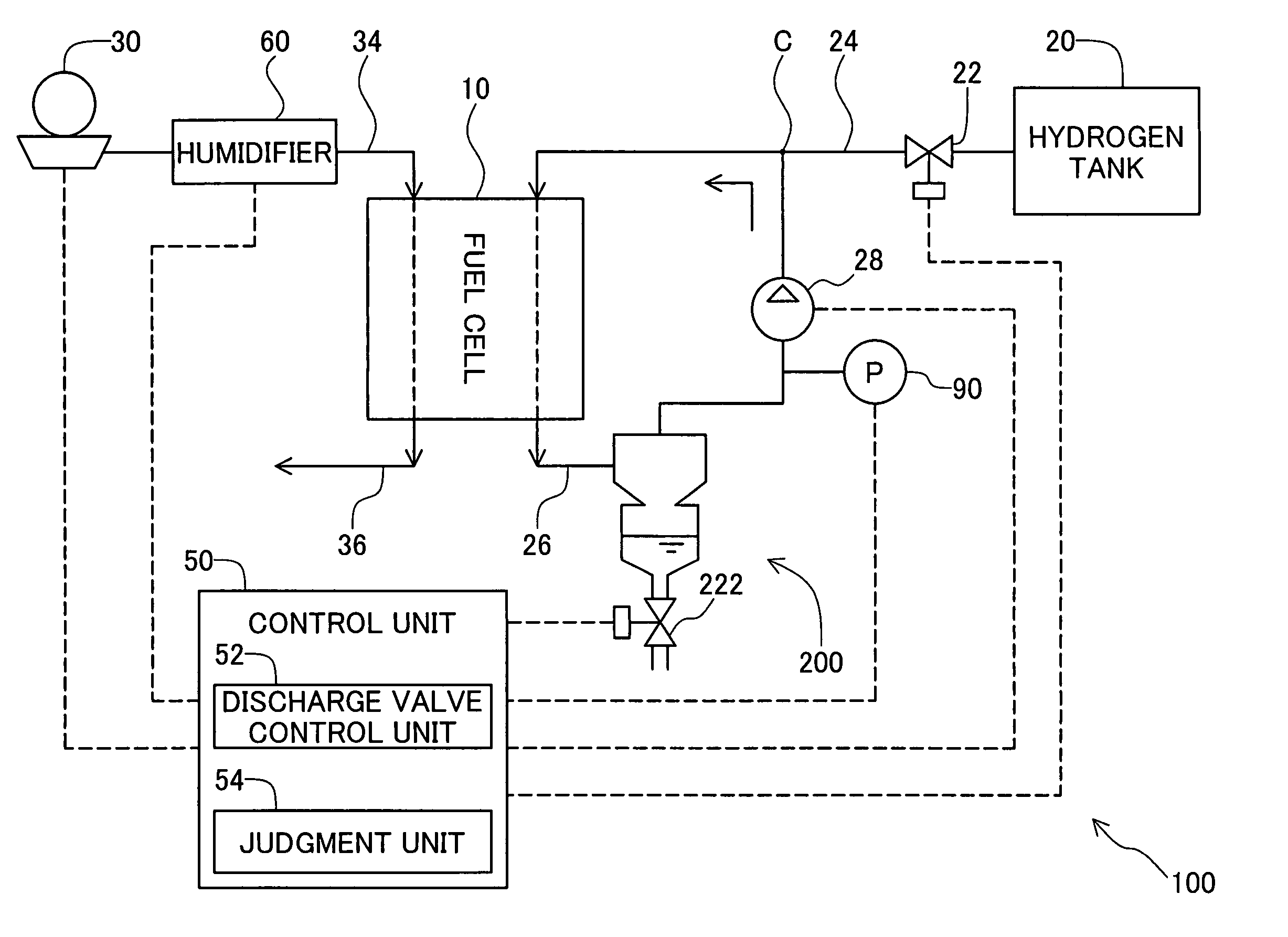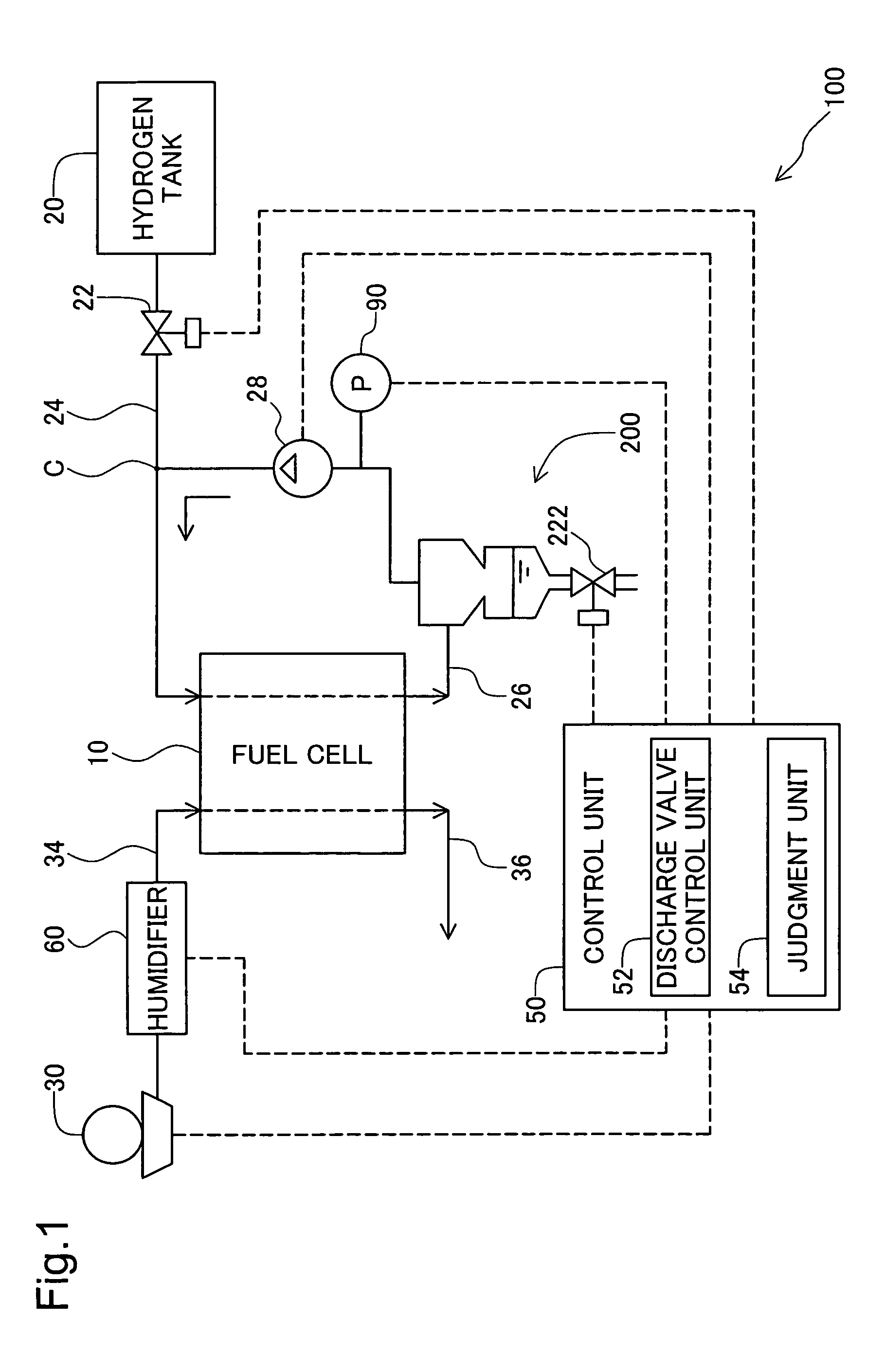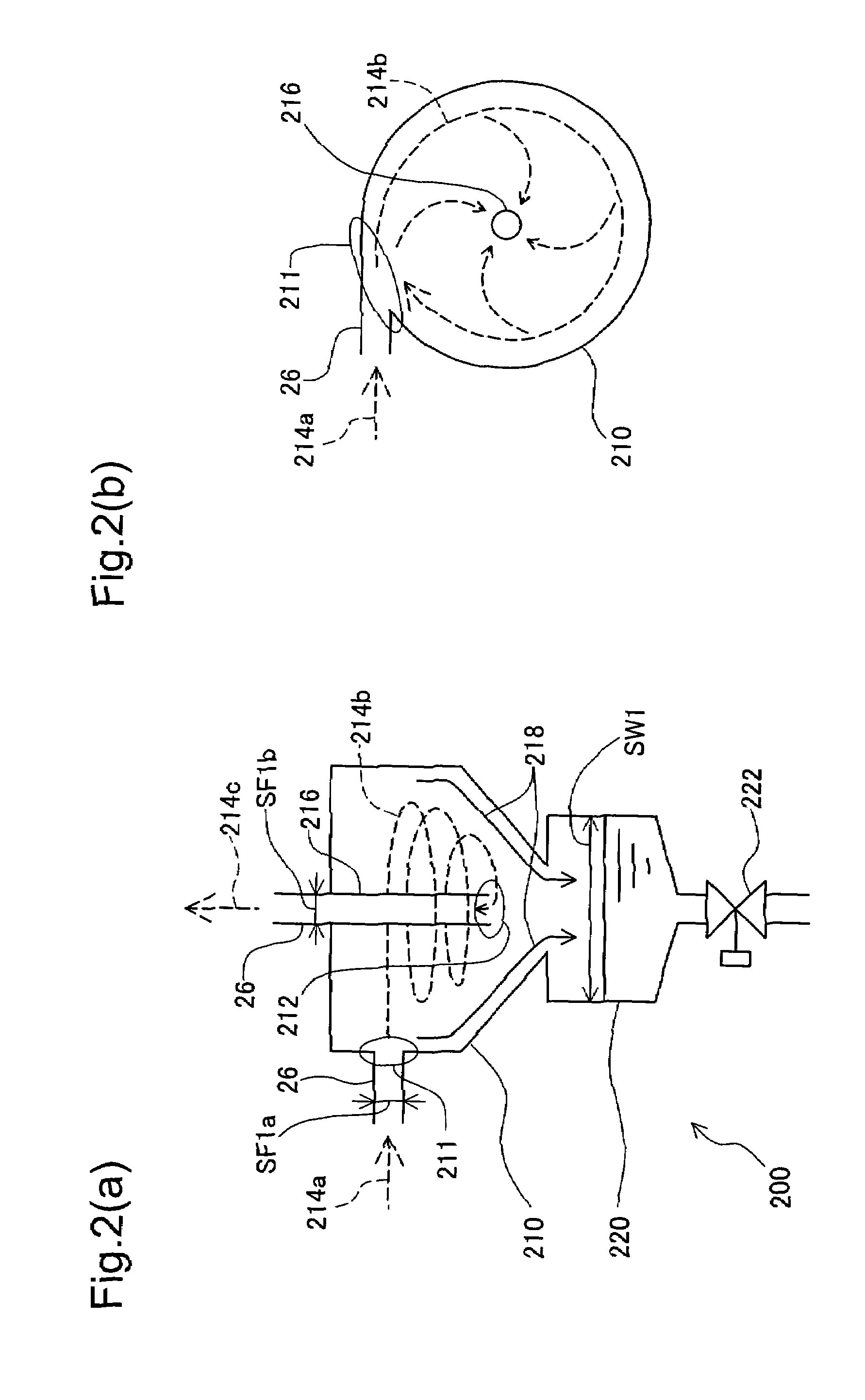Fuel cell system
- Summary
- Abstract
- Description
- Claims
- Application Information
AI Technical Summary
Benefits of technology
Problems solved by technology
Method used
Image
Examples
first embodiment
A. First Embodiment
[0028]A1. System Configuration
[0029]FIG. 1 is a block diagram showing the configuration of the fuel cell system 100 as an embodiment of the present invention. This fuel cell system 100 comprises a fuel cell 10, a hydrogen tank 20, a blower 30, a control unit 50, a water trap 200, and a pressure sensor 90.
[0030]The fuel cell 10 is of a solid polymer electrolyte type and has a stack of a plurality of single cells. Each single cell is comprised of an electrolyte inserted between a hydrogen electrode (anode) and an oxygen electrode (cathode). An electrochemical reaction occurs between a fuel gas that contains hydrogen supplied to the anode and an oxygen gas supplied to the cathode, thereby generating an electromotive force. The electrical power generated in the fuel cell 10 is supplied to a designated load (not shown in the drawing) connected to the fuel cell 10. In addition to the solid polymer electrolyte type, various types of fuel cells can be used for the fuel ce...
second embodiment
B. Second Embodiment
[0069]In the first embodiment described above, the discharge quantity of the anode discharge gas during the discharge operation may be adjusted higher as the impurity concentration becomes higher. In the first discharge process mode shown in FIG. 4, the discharge quantity of the anode discharge gas can be adjusted by adjusting the discharge time T1 when the discharge valve 222 (FIGS. 1, 2) is open.
[0070]FIG. 6 shows an example of the relationship between the impurity concentration and the discharge time T1 in the second embodiment. The horizontal axis shows the impurity concentration at the time of the discharge operation, and the vertical axis shows the discharge time T1. It is possible to avoid excessive discharge of hydrogen gas by making the discharge time T1 relatively short and making the discharge quantity of the anode discharge gas relatively small when the impurity concentration is relatively low in this manner. Further, it is also possible to prevent th...
third embodiment
C. Third Embodiment
[0073]FIG. 7 is a timing chart describing the operation of the second discharge process mode as another example of the discharge process of step S120 in the water trap control routine shown in FIG. 3. The difference from the first discharge process mode shown in FIG. 4 is that the discharge valve 222 opens and then closes in response to the judgment unit 54 establishing a “judgment that water is not accumulated” in the second discharge process mode.
[0074]In the example of FIG. 7, the discharge valve control unit 52 (FIG. 1) opens the discharge valve 222 (FIG. 2, FIG. 5) at timing te. Water accumulated in the water trap 200 is discharged through the open discharge valve 222 accordingly. The pressure inside the anode discharge gas flow passage 26 drops from an operating pressure Pd2 by a relatively small degree along with the discharge of the water. The operating pressure Pd2 depends on the magnitude of the load on the fuel cell.
[0075]When the water inside the water...
PUM
 Login to View More
Login to View More Abstract
Description
Claims
Application Information
 Login to View More
Login to View More - R&D
- Intellectual Property
- Life Sciences
- Materials
- Tech Scout
- Unparalleled Data Quality
- Higher Quality Content
- 60% Fewer Hallucinations
Browse by: Latest US Patents, China's latest patents, Technical Efficacy Thesaurus, Application Domain, Technology Topic, Popular Technical Reports.
© 2025 PatSnap. All rights reserved.Legal|Privacy policy|Modern Slavery Act Transparency Statement|Sitemap|About US| Contact US: help@patsnap.com



